With digital distance bridged during the pandemic, we're shining a light on what we've learned.
It’s clear the pandemic has shifted our response to the possibilities of digital communication in healthcare. As we move ahead, here are some insights to consider:
1. HCPs want to stay engaged
Despite the cancellation of all in-person meetings, HCPs are expecting a high level of engagement from pharma sales Reps and MSLs. Perhaps even higher than before COVID.
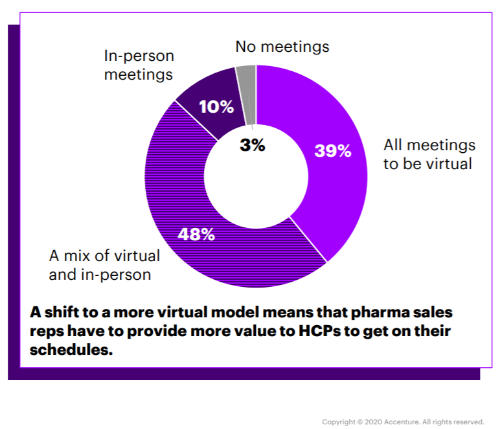
- A study by Accenture found, “Healthcare providers said the services that pharma companies are offering now are of higher value than before COVID-19. Now is the time for pharma companies to redefine their relevance.”
- Accenture also found that 69% of HCPs believe that pharma companies’ digital patient education is more helpful now than before the COVID pandemic; at the same time, 58% have received communication from pharma companies they considered to be spammy and low-quality.
- Over 89% anticipate an increase in webinars & webcasts and virtual meetings, and 85% are expecting to engage via live remote or phone detailing, as a Reuters poll has found.
- 78% want to maintain contact with their Reps, and 14% are even looking for increased contact, as a summer poll by ZoomRx found.
- A poll of nurse practitioners and physician assistants discovered that while 71% said they felt supported by pharmaceutical manufacturers, a majority want to engage with pharma digitally.
Beyond simply maintaining contact, many HCPs are also willing to spend more time with Reps right now, as studies comparing pre- and during-COVID have reported. Only 10% of HCPs want their relationship with Reps to go back to pre-Covid norms. In fact, the average time for online meetings with pharma reps has ballooned from 6 minutes to 17 minutes; a study by Veeva Systems also showed a 263% increase in emails between physicians and reps.
Engaging, high-quality communication is vital now more than ever.
2. Fascinating storytelling
Research among physicians found that nearly 2 of every 3 healthcare professionals feel bombarded with generic digital content. Knowing that we live in a world where people are constantly pressed for time, content must be delivered in bite-sized chunks and grab that person’s attention out of the gate. Storytelling is an effective way to ensure that your messages resonate and stay with those who consume it. If fact, information that is delivered as a story can be up to 22x more memorable than just facts.
Our brains are designed to think in terms of stories, and we understand experiences and information better when they come in a narrated form. Human memory is enhanced by stories, making it more memorable and capable of eliciting an emotional response. Specifically within healthcare communication, using stories can not only improve interest and problem solving, but also enhances retention and motivation.
As in this example we created for the Sick Kids Rare Brain Tumour Consortium, animation can tell a story and explain complex science while holding attention and eliciting an emotional response.
Information overload is real, so for your content to be impactful, use storytelling, visually compelling graphics, and interactive elements to hold a user’s attention. Our award-winning animation and interactive experiences can transform your science into stories that cut through the clutter and stick.
3. Collaborative platforms
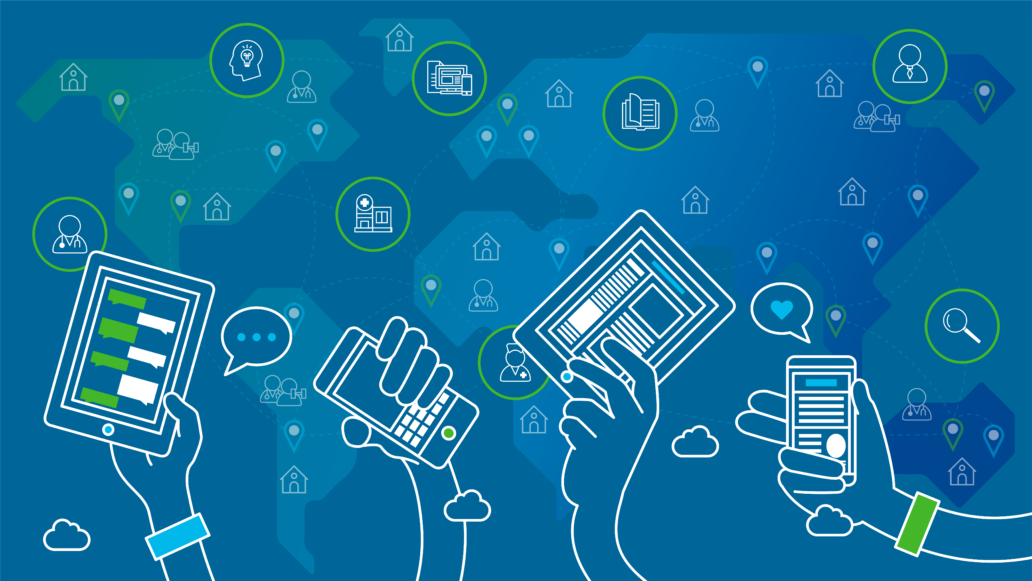
We’re all now comfortable using Zoom and Teams, but sometimes to make a point understood, we still find ourselves scribbling out an idea on paper and holding it up to the webcam in the middle of a meeting. We need the right tools to enable spontaneity and collaboration, similar to the role of a whiteboard when we were face-to-face.
New platforms like Mural, Spatial, and Miro provide everyone the ability to contribute and map things out online. Participants can actively brainstorm and collaborate, or even diagram out key points in a more efficient manner. With Zoom, you’re likely to see someone’s face and a PowerPoint slide. Platforms like Mural, allow teams to think and collaborate in a much more visual format – making meeting time much more impactful.
For internal training and education, solutions such as BigBlueButton, can provide interactive elements like polling or breakout rooms to enhance a virtual learning environment. Collaborative virtual reality platforms, like Spatial, make use of custom avatars so you can host a discussion in a whole new way – and like interactive games, VR meeting rooms can give you 100% engagement!
4. Games can hold your attention

This trivia game is an example of the fully customizable Rcade games that can excite people while promoting learning.
The video game industry is worth billions of dollars, and there are many reasons for it. Games are a tried, tested and true way of getting people’s full attention. They layer in motivators and mechanics that keep the interest of participants and make the content more memorable.
We’ve all done this – you’re in a meeting online, you turn off the camera and take a look at your phone. But when you’re engaged in collaborative play, you can’t just turn your camera off and check-out. Your team is counting on you to share and manipulate the building blocks in a mechanism of action, or for your insight on solving a puzzle.
Key messages don’t have to be a slog, they can be a chance to introduce some brevity, fun and excitement into people’s screens again.
5. The user journey needs to be seamless
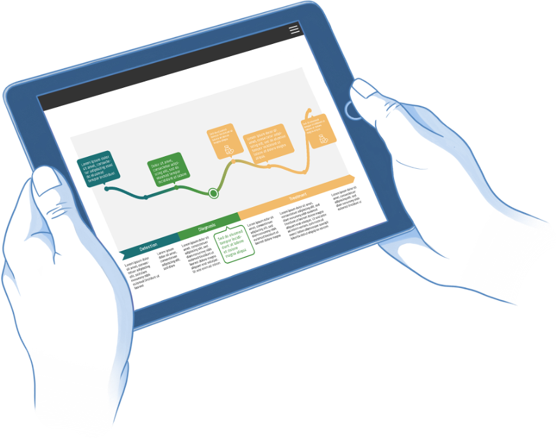
When users aren’t fussing with how to experience your campaign, they can focus on the story and emotions, making the experience less frustrating and more memorable.
From the initial email, to software your content is built on, and the experience itself, the journey for your audience needs to be seamless. Limitations and hurdles can’t just be waved away and blamed on the platform; an intuitive and pleasing user journey is essential. It’s important to recognize that audience expertise can vary. If people are frustrated by the technology you’ve implemented, they will hear your important message with an aggravated mindset which isn’t conducive to learning, and at worst creates ample opportunity for your audience to drop off completely.
Your agency partners must also acknowledge that there is additional strain being placed on clients’ IT departments; already stretched thin, strengthening internal systems upgrades to support their workforce as they work from home.
A heavy focus on backend/integration/deployment expertise should be a focus for any agency wanting to compete for your business.
It’s not just the tech side – clear and consistent instructions (“turn off mute, here’s how”), interaction principles, and outcome expectations all need to be a part of the strategy and training to ensure a successful user journey.
6. Integration is in, bespoke is out
Rather than building content platforms and channels from scratch, the best practice today is to partner and identify the best commercial/enterprise platforms out there to suit your specific needs. This allows for faster and more reliable solutions. After all, these companies have already spent the time and money to research and test their solutions ensuring they are enterprise ready – always improving to meet the needs of their customers.
In fact, there are platforms with specific capabilities for almost any necessary function: video conferencing, chat, virtual reality collaboration spaces, you name it. Can your agency evaluate the right technologies to leverage and then customize the experience for you?
Our in-house Digital Platforms Committee have taken our depth of experience in sourcing new technologies to the next level. We can connect the dots and highlight which features to leverage and which ways to make the experience unique to your needs.
With more digital HCP activity, this environment presents a golden opportunity to capture more data than ever before. A robust analytics strategy is invaluable in helping derive insights for improved engagement in future.
7. Extend the journey, extend the engagement

Responsive design is no longer just expected, it has become necessary in our mixed WFH work-life. (📸 Michael Cox)
In an environment where HCPs are consuming content on any number of devices, responsive design across mobile, tablet, or desktop has long passed from being a nice-to-have to an essential feature. People working from home now face more potential interruptions and distractions, from home schooling to washing more dishes more often. They need the flexibility to engage with your content irrespective of how or when it is consumed.
Having a suite of omnichannel assets, ready to be deployed across multiple formats, is more powerful than building one single experience to funnel everyone into, and it allows for consistent branding across digital and physical spaces.
It also allows people to experience your content across platforms depending on their day. Think about the flexibility of video conferencing. You’re working from home and can’t miss an important presentation, but the new pandemic-puppy needs to go for a walk? You can easily switch from work laptop to your phone. Imagine that for your next advisory board.
8. KOL influencers
It’s virtual conference time, and your microsite is ready: how will you drive traffic to engage with the compelling content your team has put so much effort into? It’s not just a matter of “build it and they will come”. A single tweet with a link isn’t good enough.
Reuters reports that 78% of Reps anticipate using social media more often to engage with HCPs, making it a top 5 channel for those surveyed. To really see engagement, influencers could play a prominent role.
Influencers aren’t just travel bloggers or home décor experts on Instagram. HCP experts, or Key Opinion Leaders, have become recognized as influencers across social media, both in communicating science to the public, and at the high-level expected by peers in their field.
Often these KOL influencers engage on Twitter by starting a multi-tweet walk-through of the science, known generally as a thread, or in the bioscience community as a tweetorial (#medtweetorial).
The rapid nature of social media sites, like Instagram Stories and Twitter Fleets, allow for A/B testing of messaging. By using real-time social media tools like Keyhole.co, it’s possible to follow virtual conference hashtags and see which threads are dominating the online discussion. Dedicated medical industry influencers and live event analysis can help make sure your science reaches the right people – and we can help.
9. Touchless technology
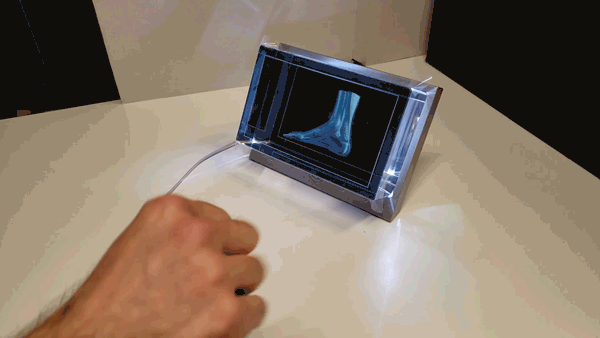
Learn more in our touchless tech deep dive.
Even as we start to get back to in-person events, things won’t be the same. We will still be wearing masks, staying apart, and washing our hands – something that won’t likely change in the near future. As people may be reluctant to physically interact with devices on the conference floor, touchless solutions like hand-tracking, floor sensors, and voice assistance will play a larger role.
Using input devices, both novel and mundane, you can still connect HCPs to visually compelling content in a manner that avoids hesitation, while projecting comfort and safety. Many of these solutions are eye-catching in their own right.
10. Virtual conferences go hybrid
Since March, there have been industry conferences of all kinds, from hasty web seminars (“you’re on mute!”) to web portals (download, sign-up, and log on). The key to delivering your core messages depends on setting up the right kind of conference, and content suited for your audience.
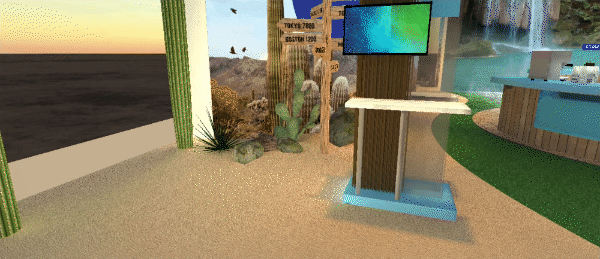
A glimpse of our fully interactive virtual conference space.
While virtual conferences are here to stay in one form or another, there’s every chance that in-person conferences will resume at some point in the future – most commonly described within the industry as “hybrid” events. It’s important to create assets – interactive displays, games, and videos – that can serve in a hybrid role for both virtual and in-person events, seamlessly.
This digital-first, hybrid future approach guides the way we design for conferences. Whether it is a simple microsite, or a booth built in virtual reality, all tactics need to work across a range of mediums that we’re sure to combine as we move through a more hopeful 2021.
🔴🧠🧬🔬
The world has pivoted to doing most things virtually, and it’s time for new thinking.
As leaders in digital innovation across the healthcare spectrum, we pride ourselves on finding unique insights, trends, and solutions that add value. From helping our clients navigate rapid shifts to digital, to creating completely new ways of telling their stories, Red Nucleus has built a foundation of service and trust over the last two decades.
If you’d like to learn more, or need a partner to help you navigate the world of virtual engagement, please contact us, and if you have any feedback we’d love to hear from you.
A previous version of this article was published in Jan 2021; it has been lightly edited. 🔴 Learn more about Red Nucleus Medical Communications. Bookmark our Resources page for the latest insights, and watch our latest animation reel.

